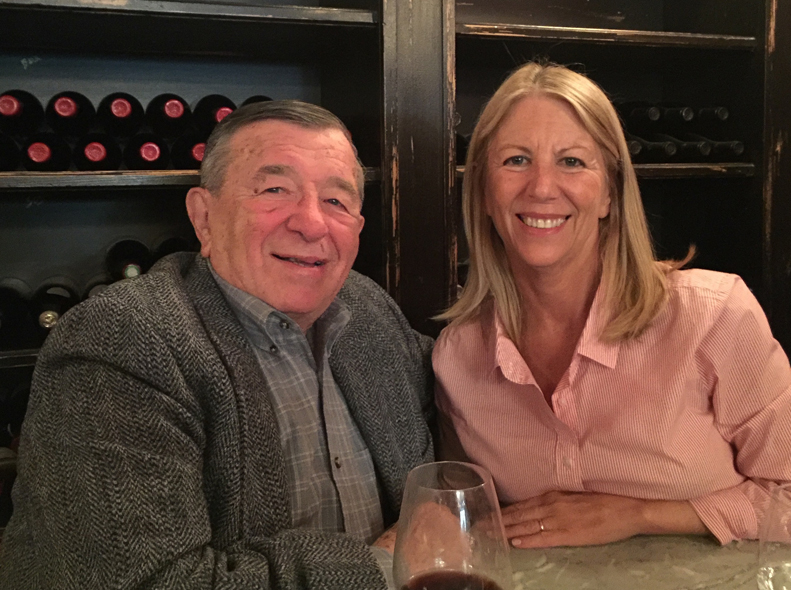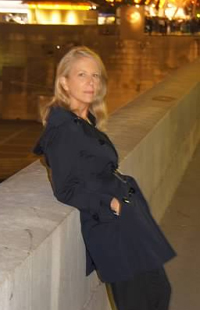by Marianne C. Bohr
"Did you know that Mayan Indians have crooked fingers?" my grandmother asks as she massages my oddly shaped adolescent pinky. "It's true," she says as I wince and tilt my head, looking at her quizzically.
"Your grandfather was Mexican, so you never know. You could be an Indian princess." She gives a quick laugh that ends in her characteristic snort. My Midwestern grandmother has a penchant for coming up with all sorts of interesting, random bits of information. "Don't cha know," she says, "one day you'll go to Mexico and find out for yourself."
Going to San Miguel de Allende was a calling. The city was tucked away in a cobblestoned corner of my imagination for twenty-five years. It was put there when I read Mary Morris's courageous chronicle, Nothing to Declare: Memoirs of a Woman Traveling Alone. Her soul-baring tale of living in San Miguel, high in the Sierra Madre of central Mexico, captured my heart. It gave me even more courage than I already had to travel alone. Now, I'm finally here, lucky girl that I am, on my own, for a weeklong writers' conference.
The place is everything I've pictured, painted in vivid, brilliant color: mango, mustard, and lemon; and of course, every shade of red imaginable: burgundy, cayenne, paprika, raspberry... Ceramic pots filled with white, purple, and blue blossoms set off the pueblo colors. Brimming with boisterous gardens, possessed of eternal spring, brisk mornings, warm afternoons, and cool evenings, San Miguel with more than 140,000 residents, can certainly be labeled a city. But deep down, at its heart, it's a delightful, lively, village.
There are many places in the world that others consider lovely, that leave me feeling cold. San Miguel, on the other hand, embraced me the moment I arrived. I feel I belong here, with these people of my ancestral and writing tribes. During the day, I commune with authors of every ilk — novelists, poets, essayists, playwrights, memoirists and screenwriters. And when I escape into the long shadows and crystalline light of the late afternoon to wander narrow lanes between high, painted stucco walls and monumental wooden doorways, I'm at home among the locals. They look like my father and my grandfather before him. The men are short and the women shorter. Just like Dad and just like me. I recognize my siblings' body types – stocky and plump, the women curvy and the men with barrel chests and substantial legs -- in those of the flower vendors and musicians on the square in front of the Parroquia. The features set in their smooth brown complexions — heavy-lidded eyes and full lips — are the very same features that look back at me and my easily tanned, white skin in the mirror. These people are my forebears, those in the sepia picture of my grandfather's 1906 First Communion, his mother and his sister beside him, multiple aunts and cousins in the background.
Yes, indeed, I feel at home here.

The author and her father
***
I stop for breakfast one morning on San Miguel's central plaza, el Jardín. The breeze already warm, I choose a table in the shade. My mouth waters as a beautifully arranged platter of fresh fruit is set in front of me – mango, melon, banana, pineapple, and papaya, with a dollop of yogurt and a sprinkling of granola. The waiter, with his muscular calves and sturdy silhouette, could be my brother. Years of Spanish classes serve me well as he and I chat, even though I admit: "Comprendo mucho, pero hablo solamente un poquito."
Fruit juice drips from my chin and my thoughts drift to a what-if of my family tree. What if my Mexican grandfather and my American father after him, had married Mexican instead of Irish women? I would likely look just like her, this woman who passes by in a hot pink dress and turquoise apron, a traditional dress that helps sell the handmade dolls and woven flowers spilling from baskets looped over her arms. My dirty blond hair, while still long and straight, would be lustrous and dark, just like hers. Mi hermana mexicana.
And then I'm off musing about a conversation I had with my mother when I was little. They wanted to name me Maria, but in the end decided that "Maria Cañedo" would sound too Mexican. So instead they called me Marianne, a nice, solid non-Latina name. That gets me thinking about my friends in high school who teased me about my father, calling him "a little wetback."
As it was their teasing was harmless fun, but would it have morphed into malice, their words dark and hurtful, if my hair were long and black and my skin brown? Were I a teenager today living amid the hateful, demonizing rhetoric against Mexicans, would I have heard snickers or worse behind my back? If my first language were Spanish, especially if I spoke English with an accent, how far would the teasing have gone? Would I have opened my brown paper lunch bag to find rice and black beans instead of a bologna and cheese sandwich? And what kind of mocking might that have provoked? But of all these meditations, the questions I can't get out of my mind, those that give me the most pause are: would a white boy like my husband have dated me if my skin had been several shades darker? And would he have decided to marry me? I'd certainly like to think so, but my meditation ends abruptly with no clear answers.
With a quick "señora," I'm back in el Jardín, my new friend clearing my empty plate and asking if I'd like more coffee. "No, gracias," I answer and smile. It's time to get back to my other tribe – my writing tribe. I'm reluctant to leave this comfortable spot where it's so easy to think about what-ifs and watch the world of San Miguel pass by. I pay la cuenta and leave a tip worthy of family.
"Hasta mañana?" he asks as I swing my backpack over my shoulder.
"¡Claro que sí, señor, hasta mañana!" I step from behind the table, my crooked pinkie pointing proudly to fast-moving clouds crossing the azure sky. I wave adiós in the sunshine.
**************

Marianne C. Bohr has been married for over 30 years to her high school sweetheart. At the age 55 she left a highly successful corporate career in book publishing, taking a year-long sabbatical to travel across Europe. Gap Year Girl: A Baby Boomer Adventure Across 21 Countries, is the book she wrote over the course of that journey.
She is now a teacher of middle school French and a freelance writer and editor whose article on her gap year, The Year of Living Spontaneously, ran in Bethesda Magazine.
www.mariannecbohr.com